Analytics Dashboards for Monitoring
Analytical Predictive Process
There are several processes that go through to be able to make perfect analytical predictions. It takes impeccable analysis to find and exploit the patterns contained in the data to detect risks and opportunities. The following are the stages of the analytical predictive process:
1. Define Project
Determine the project results to be predicted, work results, business scope, business goals and prospects, and identify the data to be used. By specifying your project, it will be easier to do analytics later.
2. Perform Data Collection
The data can be obtained from various sources in accordance with the project to be predicted. By collecting and collecting data, it will simplify the analysis process and provide a complete view of customer interactions.
3. Data Analysis
Data analysis is the process of inspecting, transforming and modeling data with the aim of finding useful information for determining predictive analysis. After analyzing the data, the process of inferring data from all the data that has been analyzed is carried out.
4. Statistical Analysis
After analyzing the data and making conclusions on all the existing data, it is continued by carrying out statistical analysis. This analysis is carried out to validate assumptions, hypotheses and perform testing using standard statistical models.
5. Modeling
The prediction modeling process is carried out to make an accurate predictive model about the future. Modeling also provides the ability to determine the best solution options by evaluating multiple models.
6. Predictive Model Deployment
In this process the deployment model provides options for deploying analytical results. The analytical results are disseminated into the decision-making process every day which will be used to get results, reports and outputs by automating decisions based on modeling.
7. Monitoring
This method is carried out to monitor the performance of the model to ensure that the analytical predictive process can provide the expected results.
Predictive analytics model
Models are the foundation when performing predictive analytics. Models allow users to turn old data into actionable insights which in turn will create positive long-term results. Some types of prediction models include:
- Customer Lifetime Value Model: This predicts model by determining which customers are most likely to invest more in your products and services.
- Customer Segmentation Model: Segment group customers based on the behavior and characteristics of customers who make the same purchase
- Predictive Maintenance Model: Forecasting the probability of critical equipment failure occurring.
- Quality Assurance Model: Find and prevent defects to avoid disappointment and additional costs when providing products or services to customers.
Use of predictive analytics
Several organizations and companies have used predictive analytics to help increase their sales and analyze the capabilities of competitors. The following is an example of using predictive analytics:
1. Detect errors
Detection of potential errors in a system needs to be done to prevent these errors from happening. Through analytical predictive methods, a company can predict when an error/damage will occur.
Companies can also study behaviors as an indicator that the error/damage has the potential to occur. For example, a production company makes predictions about how much production is likely to produce defective/damaged products.
2. Optimizing marketing campaigns
Predictive models help businesses to attract and retain their customers especially the most profitable for them. Using predictive methods, a company can predict potential customers who match the products they offer and predict what customers are currently in need of. So, companies can optimize the marketing campaigns that they will run.
3. Operations research
Many companies use predictive analytics as planning in raw material inventory, when inventory will run out, when should order etc.
Model Predictive Type
There are two types of predictive models, namely classification models and regression models. The classification model aims to predict the value of a subject. For example, a company classifies whether a prospective customer deserves a credit card or not.
Generally, the classification model is in the form of 0 (not eligible to be given a credit card) and 1 (worthy to be given a credit card). Several methods can be used in forming the classification model, namely logistic regression analysis, analysis discrimination, cluster analysis, decision tree and random forest while the regression model aims to predict or predict a value.
An example is forecasting the number of user data on a company's website for the next 5 months. Several methods used to form the regression model are regression analysis and time series analysis. The three most frequently used predictive methods are:
1. Decision Trees
Decision stress is included in the classification model which divides the data into subsets based on the category of input variables. This model can help us how someone makes a decision. Decision trees divide the data into the most distinct groups.
2. Regression analysis
Regression analysis is one of the most frequently used (popular) analytical methods in statistics. Regression analysis is a form of relationship between the independent variable and the dependent variable. The relationship of these variables can be in the form of linear, logarithmic, additive or multiplicative.
Regression analysis can be used for predictive purposes, namely estimating the value of a variable (known as the dependent variable) based on the value of another variable (called the independent variable).
3. Artificial Neural Network
The artificial neural network method is one of the most popular and sophisticated methods because it is able to model very complex relationships. The method is also known to be strong and flexible. The strength of this method can be seen from its ability to handle non-linear relationships.
This technique is often used when mathematical/statistical models are no longer able to describe the relationship between input and output. In this method, the prediction is more important than the explanation of the model. Artificial neural networks were originally developed to imitate human neural networks.
PERFORM PREFICIVE ANALYSIS
There are several useful applications to support all processes when performing predictive analysis. What are the applications to support the Predictive Analytics process?
1. Customer Relationship Management (CRM)
CRM is a predictive analyst application used to achieve CRM goals, namely marketing, sales, and customer service campaigns. Customer Relationship Management is often applied in the customer life cycle, such as acquisition, retention, relationship growth.
2. Health Care
Health care is an application that is used in the predictive process of analysis of health care. This application will determine information about patients who are at risk for certain conditions, such as asthma, diabetes, and other lifelong diseases. This application system will support clinical decisions incorporating predictive analytics to make medical decisions at the point of care.
3. Collection Analytics
A prediction application that analyzes and optimizes resource allocation for collection by identifying contact strategies, effective collection agencies, legal actions that serve to improve recovery and reduce collection costs.
4. Cross Sell
Cross sell serves to analyze customer expenses, usage and other behaviors, and leads to efficient cross selling. This application can also be used as a medium to sell additional products to these customers.
5. Fraud Detection
Predictive analytics application that functions to find inaccurate credit applications, and fraudulent transactions that occur online or offline, fake insurance claims and identity data theft.
6. Risk Management
This application is to predict the best portfolio which is useful for maximizing returns in capital asset pricing models. Not only that, risk management also functions as a probabilistic risk assessment to produce accurate predictions.
7. Direct Marketing
This application serves to identify the most effective combination of product versions, communication channels, marketing materials, and time spent to target a specific audience.
8. Underwriting
This application is useful for helping to bear the amount by predicting the possibility of problem, and bankruptcy. Predictive analytics can help you streamline customer acquisition by predicting a customer's future behavior using application-level data.
Tools for Predictive Analytics
Predictive analysis is often used by companies engaged in insurance, marketing, banking, financial services, retail, travel, telecommunications, etc. There are several software for predictive analysis that can do and make it easier to predict analysis, what are they?
1. Rapid Miner
Rapid miner is a software platform, which helps the data analysis process, especially in carrying out the productive analysis process.
2. Microsoft Azure Machine Learning
Azure machine learning is cloud-based software to perform and provide fast solutions in making predictive analytics.
3. Knime Analytics Platform
Knime analytics platform is open source software that functions to perform predictive analysis, data science, etc.
4. SAP Predictive Analytics
SAP Predictive Analytics is software designed to manage large data sets, predicting future results, behavior.
5. IBM Predictive Analytics
IBM Predictive Analytics is software for performing predictive analysis that has quite a lot of features that support analytical processes such as data mining, predictive modeling, optimization, text analytics, machine learning, and real time scoring.



